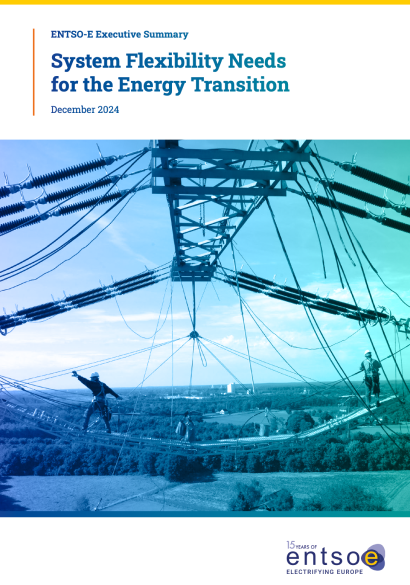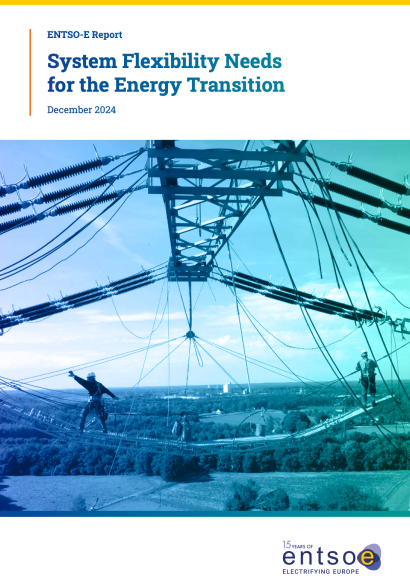System Flexibility Needs for the Energy Transition
Executive Summary
The System Flexibility Needs for the Energy Transition study examines the evolution of system flexibility needs through 2030 and beyond, leveraging datasets from the European Resource Adequacy Assessment (ERAA) 2023 as a primary input. This work remains technologically neutral as it exclusively concentrates on the requirements of the power system and does not recommend specific resources or technologies to fulfil the identified needs.
ENTSO-E’s analysis characterises and provides key insights into the evolution of pan-European flexibility needs:
- Pan-European flexibility needs linked to generation and demand variability are projected to double between 2025 and 2033 across all examined timeframes.
- The need for short-duration flexibility and ramping capabilities—particularly relating forecast errors and system operation—is expected to roughly double by 2030, varying based on country size and generation mix.
- vRES generation shortage events might occur 2 to 4 times annually, lasting on average up to 6-10 days and resulting in a vRES generation gap ranging between just a few MWh up to several TWh in the worst scenarios for the largest countries.
- Prolonged shortages in vRES generation are expected to have regional impact, affecting multiple neighbouring zones simultaneously, heightening the risk of system stress and reducing the mitigation effect of interconnections.
- Interconnectors will play a crucial role in mitigating flexibility needs across various timeframes, except at the time of prolonged shortages in vRES generation that affect multiple countries.
The findings highlight the importance for ENTSO-E and transmission system operators to keep exploring the topic and for all stakeholders to incorporate it into comprehensive assessments. This is fundamental in order to quantify flexibility needs and facilitate the effective and timely deployment of resources to cover them. Moving forward, ENTSO-E and TSOs should continue to refine metrics and methods to proactively identify and address emerging system challenges.

Background
The System Flexibility Needs for the Energy Transition study is the result of work mandated by European transmission system operators as a follow-up to ENTSO-E’s Strategic Roadmap and ENTSO-E Vision: A Power System for a Carbon Neutral Europe, both of which identified flexibility as a crucial factor for both the present and the future power system and underscored the need for quantitative analysis of flexibility requirements to initiate discussion and build further expertise on the topic.
The European Commission has also recognised the importance of flexibility and the need for quantitative assessments through its Electricity Market Design Reform (EMDR). The new regulation, that entered into force in July 2024, mandates regular national flexibility needs assessments and tasks ENTSO-E and the EU DSO Entity with developing a common methodology for their evaluation by transmission system operators and distribution system operators of each member state.
ENTSO-E is dedicated to making meaningful contributions to this critical task, and more generally in the discussion on flexibility, leveraging its members’ extensive experience in operating the electricity system and their knowledge of adequacy and network planning studies to support all relevant stakeholders, including decision-making bodies at the national and pan-EU level. The work carried out by the Association has been essential in enhancing the understanding of this complex topic and deriving key conclusions on the most relevant system flexibility needs, with the findings already supporting the Association in effectively fulfilling the ongoing EMDR mandate.
Downloads
- Send your questions or feedback to info@entsoe.eu
 ENTSO-E
ENTSO-E
